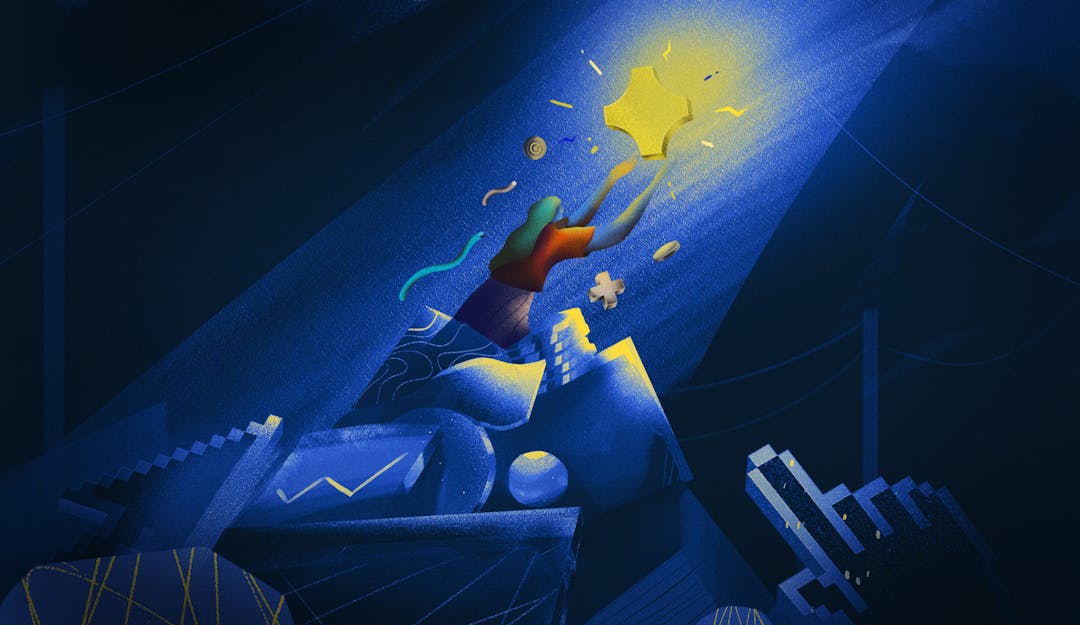Customer acquisition is an important part of growth for any SaaS business, but if the customers you are acquiring are simply replacing customers who've churned, you'll see no growth. In the long term, this is unsustainable. So customer retention is just as important as customer acquisition. Unfortunately, this important part of the SaaS business doesn't always get the attention it deserves.
What are customer retention programs?
Customer retention programs are strategies put into place by a SaaS company to help reduce churn. The goal of a good customer retention program is to predict conditions that cause customers to churn and preemptively address those issues. Although many issues will be unique to a given company, there are also some strategies that are applicable to every business.
Why mastering customer retention is so difficult
We mentioned earlier that retention doesn't get the same attention that acquisition does. This is partly due to the fact that people don't recognize the importance of retention. But another factor is likely that retention can seem very difficult. Understanding what leads to this perception can help overcome some of that difficulty.
Retention budgets are typically smaller than acquisition
Every business ever started needs to get customers. Because the need for acquisition is a given and the need for retention is limited to subscription businesses, the latter is often overlooked. This means the sales team is one of the first teams to get hired and the retention team, if it exists at all, is underfunded.
Retention programs take time to see results
When you first implement a retention program, it can feel like you are just spinning your wheels. It seems like nothing is happening; however, it takes time. This may lead to the false perception that retention is harder than it is. Though results are not immediate, they're well worth the wait.
Retention is multifaceted: there's no one-size-fits-all approach
Although there are many strategies any business can benefit from, not all of them are going to solve a particular business's primary reason for churn. Seeing the most meaningful results means moving away from cookie-cutter programs and finding the one that best fits the problem.
3 most important retention metrics
Improving retention takes time, and tracking the results means following the right metrics. There are three key metrics that will help you determine how much you are losing to churn and how effectively your retention strategies are performing.
- Churn rate — Your churn rate is the number of customers that are canceling their subscriptions in a given period. This is one of the most important metrics because it tells you how much you need to shift your focus towards retention.
- Revenue churn — Losing customers at higher-priced tiers hurts more than losing them at lower tiers. Churn rate alone will not tell you how much money you are losing to lost customers. Revenue churn attaches a dollar value to the previous figure. This number will tell you how much money you can gain back by implementing better retention strategies and can help you decide on a budget for those efforts.
- Net Promoter Score (NPS) — Your net promoter score is how likely your customers are to recommend you to someone else. This, along with any other customer satisfaction metrics you may have, will tell you how well your retention strategies are working. Happy customers don't leave, and unhappy ones are almost guaranteed to.
Solving retention requires understanding when, where and why customers churn
Every business is different. The reasons customers leave your service will be completely different from the reasons they leave a competitor. Understanding the unique struggles of your customers throughout their journey will help to extend their lifecycle and reduce your churn. There are a few steps you can take to help identify these causes.
Build a recovery plan for customers with failed payments
Figuring out the reasons customers want to leave is a mandatory part of reducing churn. But sometimes, leaving isn't the customers decision. Failed payments are a big cause of churning and minimizing those will help you focus on the real issues that drive customer decisions.
Identify leading indicators of churn
Clues to why customers churn will be hidden in your metrics. Unfortunately, the reasons are so varied that we can't tell you exactly where to look beyond a dropping net promoter score. It could be that customers aren't spending as much time using a new feature as you'd expected; are you educating them properly on its use? Customers who don't log in very often are certainly risks for churn, how are you reaching out to them to keep them engaged?
Talk to customers and get feedback throughout the customer life cycle
Scouring the metrics and playing detective can be a great way to figure out why customers are churning, but there is a more direct way. Ask them. You should be soliciting and reacting to customer feedback throughout their life cycle. This will inform you of their struggles before they become a problem and tell you why the left if they ultimately do.
8 customer retention strategies that work
While you'll have to find your own unique reasons for churning customers, there are some strategies that can help every SaaS business slow churn. You should consider implementing some of these strategies into your overall retention plan.
- Philanthropy and community programs — Customers connect better with brands that share their values. A stated mission and philanthropic activities in support of that mission are a good way to show that your business has values worth being loyal to.
- Offer freebies for VIPs — Rewarding long-time customers and other VIPs is a tried and true method of building loyalty among those customers. As these customers also tend to be your biggest spenders, retaining them becomes extra important.
- Customer satisfaction surveys — We discussed this one above. Customers are not only more likely to stick around if they feel their voice is being heard, but you can more easily diagnose and prevent problems when you are continuously getting feedback from customers about how your service is fitting their needs.
- Provide subscription discounts — Since businesses have existed, pricing discounts have been a good way to increase both initial and repeat business. The same can be true in SaaS when done properly. Discounts can encourage customers to sign up for longer-term subscriptions and old ones to stick around or extend.
- Make sure all customer communication is personalized — Customer relationship management tools have allowed for personalized communication for long enough now that customers expect it. Being addressed generically will make your company feel more icy and distant, whereas personalized communication feels warm and close.
- Focus on customer service metrics — You net promoter score will tell you how your customers are feeling about you, but there are other metrics that can predict how that one may change. Make sure that your customer's concerns are getting answered quickly.
- Automate customer support — A good way to increase response and resolution times is to automate as much of your customer support as possible. These could mean chatbots that help customers find answers to common questions, a knowledge base with well-written documentation, and tutorials to help them get answers on their own, an automated retention email strategy system to respond to common inquiries and route the more complex question to the appropriate person, and more.
- Outreach proactively — Once you've got the hang of your retention efforts, you'll quickly learn the warning signs that a customer is about to churn. Maybe they haven't logged in for a while, or maybe they're giving you lower scores in their feedback to you. Whatever the cause, you should reach out to the customers and offer to help improve their experience before they churn.
Building a retention strategy that's specific to your business
Some of the above may work well for your business. Others may not make any sense at all to your business model. Others still might make sense but do not address an actual concern with your particular customers. In order for your efforts to have an effect on your churn rate, you'll need to come up with a system that is tailored to the value you drive and built around a proposition that your customers respond to.
By using your metrics to see where your customer base is struggling and experimenting with different methods to help relieve them of those struggles, you'll soon find the combination that works best for your business and be on the road to keeping churn low.
3 examples of customer retention programs
We've talked about some strategies that can help with retention, and we've talked about the need for a retention team to have a budget. Beyond the simple strategies mentioned, what does a retention team do that justifies their cost? There are several number of customer retention programs that your team can make a part of their regular routine the same way your sales and marketing team have routines specific to their goals.
Create and maintain a customer onboarding system
Customers who aren't able to fully take advantage of your software are likely to grow frustrated and leave at some point. An onboarding system will help them get up to speed, so they can hit the ground running and immediately start out having a rewarding experience with your software.
Implement a customer success program
Even after they've been onboarded, your customers may struggle. This is especially true if a new use case pops up that they aren't familiar with, or a new challenge arises that your software doesn't address well. A customer success program will help proactively stay in touch with those customers and ensure that they are getting the most out of the software by finding solutions to the problems they have.
Reach out to past customers
It can be easier to win back old customers than it is to win over new ones. The easiest customers to win back are those that have previously rated you highly and never sent complaints to customer support. These customers might have left due to financial issues (that could be resolved with a discount) or some other reason besides being unhappy with the service. Start with these customers and then move on to more difficult ones.
Conclusion
Keeping existing customers is just as important as getting new ones. You'll need a solid plan in place if you are going to minimize churn. To execute that plan, you'll need a proven set of tools. With free ProfitWell Metrics, you'll be able to track the KPIs that you need to inform your decisions about why customers churn and gauge the success of your retention efforts. If failed payments are causing your customers to churn, Paddle Retain can help win them back.

